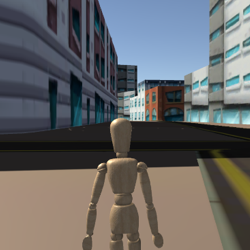
Using the principles of universal design, this project aims to create a VR environment that reduces usability issues such as balance in order to test virtual built environment designs with users who have a balance or sensory impairment.
Outcomes
This project developed low-cost virtual reality hardware and software, using off-the-shelf sensors and an open source games engine to create a complex environment for a user to walk in. Importantly, the project tested the feasibility of measuring a user’s movement response and enabled the collection of high-fidelity movement data alongside low-cost motion capture sensors. This will enable different scenarios to be tested on participants who have a sensory or balance impairment, as well as those without, in order to ensure the built environment is designed with neurodiversity in mind.
Method
- Literature review
- Prototyping
- Experimental
Next Steps
This technology would require more user testing with the intended user groups and further development before wider adoption.

